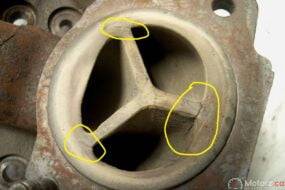Exhaust Smoke Decode exhaust smoke colors. The sight of exhaust smoke billowing from a vehicle’s tailpipe can be a cause for concern or a mere spectacle, depending on its color. Each hue tells a story, revealing crucial information about the engine’s health and performance. Let’s embark on a journey to decode the mysterious language of exhaust smoke.
White Smoke: The Ghostly Signal
Exhaust Smoke White smoke is often the first color that captures our attention. While it may seem innocent, this spectral emission can be a sign of trouble. One common culprit is coolant leaking into the combustion chamber, indicating a potential issue with the head gasket or cylinder head. It’s crucial not to overlook this ethereal plume, as engine overheating and severe damage may follow.
Black Smoke: The Sooty Messenger
Black smoke emanating from the tailpipe is a clear indication of an imbalance in the air-fuel mixture. In diesel engines, it often signifies incomplete combustion due to excessive fuel. This can be caused by a clogged air filter, faulty injectors, or a malfunctioning turbocharger. Addressing the root cause promptly is essential to prevent long-term damage and improve fuel efficiency.
Blue Smoke: The Cerulean Warning
If your vehicle is enveloped in blue-hued exhaust smoke, it’s time to pay attention. Blue smoke suggests that engine oil is making its way into the combustion chamber, indicating a potential oil leak. This could result from worn piston rings, valve seals, or a malfunctioning PCV (Positive Crankcase Ventilation) system. Regular oil checks and prompt repairs are crucial to prevent further engine damage.
Gray Smoke: The Ambiguous Shade
Gray smoke is a bit of a chameleon, and its interpretation depends on its intensity and smell. Light gray smoke may be a normal byproduct of diesel engine combustion, while a darker shade may indicate burning oil. Pay attention to accompanying symptoms and seek professional advice to accurately diagnose and address the issue.
No Smoke: The Ideal Scenario
While not a color per se, the absence of visible Exhaust Smoke is the ideal scenario. A well-maintained engine, proper combustion, and a healthy air-fuel mixture contribute to a clean and smoke-free exhaust. Regular maintenance, timely oil changes, and attention to engine diagnostics are key to preserving this state.
Conclusion
In conclusion, Exhaust Smoke serves as a visual diagnostic tool, offering insights into the inner workings of an engine. By understanding the meanings behind different colors, vehicle owners can take proactive measures to address issues and ensure the longevity of their engines. Regular maintenance and prompt attention to unusual smoke colors can keep your vehicle running smoothly, preventing minor concerns from evolving into major headaches on the road.







